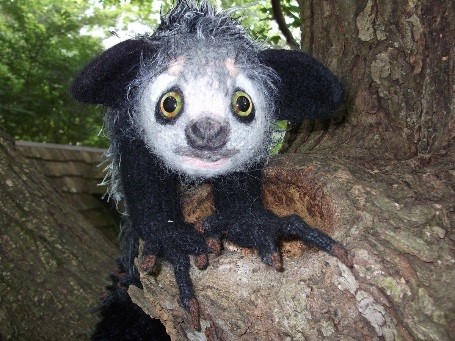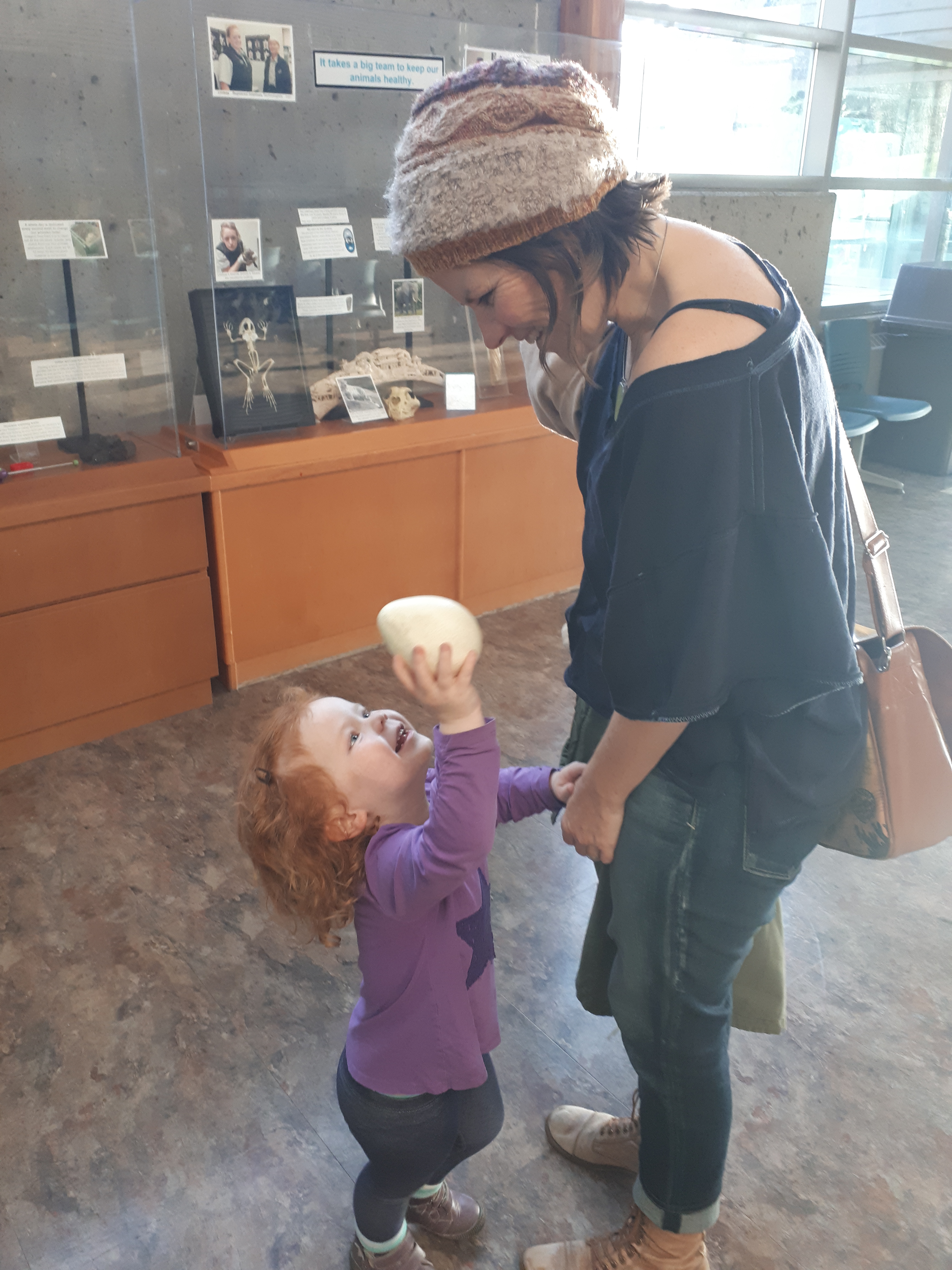By Lisa McDonald
If we want children to flourish, to become truly empowered, let us allow them to love the earth before we ask them to save it. - David Sobel
Parents and other role models provide the strongest influence in creating a child’s capacity to show empathy to other living things including birds, mammals and insects. (Mary Gordon, 2001)
In our staff training we emphasize that every interpretive team member plays a vital role in connecting children to nature. For the last 3 years our team has made it a goal to connect children to nature through their sense of touch.
Touch involves our emotion, thinking, sensing and motor systems. It is so critical to human development that it is the first of our senses to develop in the womb. When children touch-especially with the fingertips and palms of their hands, they begin to form an understanding of the world around them. Recognizing the importance of touch we’ve planned our education resource acquisition to connect young hearts and minds.
We began by supplementing our traditional teaching tools of photos, skulls and bones with small, realistic, whole animal toys. We’ve connected with several artisans that make life-like, soft-bodied, cuddly animal replicas through Etsy, the e-commerce website focused on handmade items. We encourage even the youngest children to hold, manipulate and closely examine them, and yes, we encourage connecting through play. Items begin to look a little rough and ragged but we consider wear and tear tremendously encouraging and indicative of educational success!!

Stories can also create powerful emotional connections. When we encourage a child to think about how another person or animal might be feeling, we are helping them to become kind, considerate and caring. (Mary Gordon; 2001) Communicating thoughts and feelings through face to face contact is a very important part of being able to understand the thoughts and feelings of another human being. (Michele Borba, 2016).
The lemurs in our new walkthrough exhibit sparked positive emotions in our guests and we wanted to take that connection further by creating a large, colorful, community conservation storybook to guide family conversations about lemurs and the forests they live in. Messages of love, not loss were key to our theme.

Our community conservation story is told by fictional Malagasy sisters, Tandra and Felona. They share impressions of their life in Madagascar and we see that they have a mother, father, a baby sister and aunties. They talk about their love of their home, lemurs and forests. The story, told through illustrations, words and photos is fun, simple and happy.
Time is so precious to young families on the move. A key learning for our team has been to lead play and storytime where guests have shade, water and comfy seating. Families and friends can rest, relax and relate while our teams are making inspiring connections with the children.
Our next step is measuring the effectiveness of our techniques-something that our colleagues at St. Louis Zoo and Seattle Aquarium are exploring. We think we’re on the right track. If you have any advice we’d love to hear from you!

If you’d like to read more:
Mary Gordon, Roots of Empathy, 2001.
Michele Borba, Unselfie, Why Empathetic Kids Succeed in our All-About-Me World, 2016.
Lisa McDonald is the Manager of Visitor Engagement and Interpretive Planning at the Calgary Zoo. She's currently exploring ways to connect with audiences through empathy development, conservation psychology and nature play.